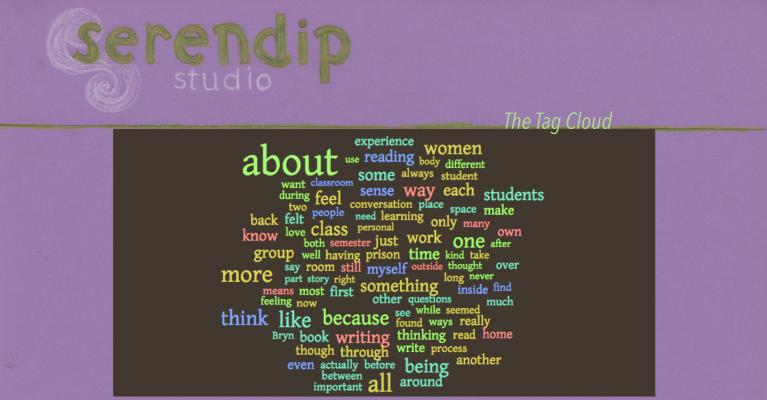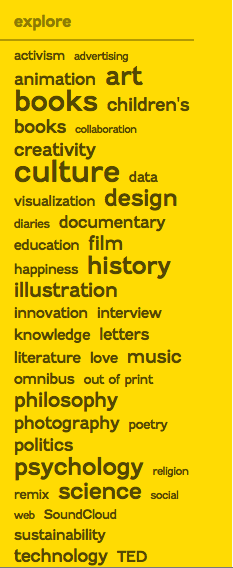February 3, 2015 - 16:24

I have all of my Serendip pages bookmarked and I almost never visit the homepage of Serendip. In exploring that homepage, I found an entire world on Serendip that pretty much never seems to intersect with my own personal use of the site. Out of curiosity, I polled some previous Serendip users, and asked about how they got to their class’s page. Did they go straight to the class page, or did they go to the homepage first and then find their class page? No one I asked could remember ever using the homepage to get to their particular class, and most had their class page bookmarked as I do. I started to wonder why this might be, and whether or not there would be a way turn the Serendip homepage into a kind of home base that users would feel more inclined to visit. One of the reasons I think this might be so important is that I would like the site to be facilitate more interactions between users in different classes, rather than each class remaining in it’s own little pocket of Serendip. As I started to envision ways of building these connections, I wondering if there was some way to connect posts that have the same tags, similar to the way that sites like tumblr and facebook use the hashtag symbol to compile posts with the same tags between separate users who might not have otherwise come into contact with each other. And I found myself picturing a word cloud for the most used tags on Serendip; where if you clicked on a word in the cloud, it would redirect you to a page with all the posts that had been tagged under that subject, beginning with the most recent posts.

Just for the sake of a visual example, I ended up my own writing to generate of a word cloud.
In first days of January in 2014, prior to having been approved as an independent major, Anne sent me an email that contained a 56-page document compiling all of my serendip posts from the previous fall semester. Anne mentioned that she and Jody both felt that this writing “really could 'count' as an ed thesis--in volume and quality.” Opening that document was a very formative moment for me. Although we had already been talking about potentially forming this independent major, this was the first moment that I could realistically envision that independent major coming to life. I’ve been told so many times before that my tradition pattern, with work, and in life, is to get to the end, and completely reinvent the wheel, rather than follow through. I was always that student who worked and worked on an essay, then would get to the night before it was due, and start over entirely from scratch. So I had a lot of doubts about this independent major, about whether or not I was just looking for a way out of not finishing other work I had already started… and this was the first moment it really hit home that I wasn’t starting over; I had already been working on this independent major long before I knew that it was a major. Not only that, but I think I had a lot of doubts about my own capacity to produce writing in of itself, and here in front of me, was proof that I could write. It didn’t matter that it wasn’t one single piece of writing, because it was 56 pages of work that I did, in a document that is longer then most of the thesis’s that my friends would eventually write in the upcoming semester.
Out of curiosity (or maybe I was avoiding other work), and I started to add all of my significant posts (so not including comments or smaller posts) from Serendip that I wrote after 2013 and leading up until last week, into this 56 page document, which quickly turned into a 223 page document. I then put all 45,054 words into a website called word it out, which then generates a cloud of all the most used words within a text.
Update on 2/5/15:
So I was surfing one of my favorite websites, http://www.brainpickings.org/, when I realized that it has something which is basically the same thing as the tag cloud idea, which I took a screenshot of below. Each work is a link to all her posts that are tagged with that subject!


Comments
learning in a community and "independent" work
Submitted by adixon on February 5, 2015 - 10:44 Permalink
I like your image and your ideas. The most intriguing thing for me, here, is the question of what does it mean to do an "independent project" or a "senior thesis" in a serendipish context. The traditional education model of doing that sort of work is predicated on doing it largely alone, with a faculty advisor providing guidance along the way, presumably so you don't go too far astray. And so I can imagine that if you take that traditional education model to the digital age, you then get an outcome that looks like a standalone e-portfolio blog/website where your work is showcased (with appropriate attribution, of course).
Serendip, on the other hand, is an ecosystem to grow collaboration - through dialogue, joint writing, thinking and learning in community. Your ideas about the home page and the tag cloud are pointing to wanting more connections within the ecosystem, more opening points for collaboration. So what does it mean to do an "independent project" or a "senior thesis" using collaborative processes and outcomes?
thinking further about your question...
Submitted by sara.gladwin on February 5, 2015 - 13:04 Permalink
This is a really interesting question for me to think about because I'm not sure I've ever really thought of my major as "indepedent" so much in the sense of me doing it alone, but rather that it is simply independent from traditional academic majors/structures of eduaction... if anything, one thing I've realized is that collaborative work and and community learning/growth is the heart and sole of a lot of the work I've been doing within this major. So much academic work is conventially regarded as a solo endeavour; you are expected as a student, to be able to produce papers and writing alone, to take tests alone, to develop and strengthen your own, individual opinions... however, being in the women in walled communities 360 and at Riverside has overwhelmingly taught me that my best work, writing, lesson planning, and anything I do really, is deeper and richer when it is in collaboration with those around me. This really speaks to why I think serendip is the right space for this Independent Major, as forum that is continually seeking ways to build points of connection and grow an ecosystem of learners, I want to be able to reflect the multitude of ideas that feed all of the work I end up producing.
i'm loving
Submitted by Anne Dalke on February 6, 2015 - 10:32 Permalink
both the visuals here and the interesting, paradoxical intersection of "independent" and "collaborative"--so that the "independent" major becomes distinctive in that it refuses the trad'l siloing of major work by being insistently interdisciplinary and collaborative....can't wait to see where you take it!
a.
citations, re-thought
Submitted by adixon on February 9, 2015 - 09:35 Permalink
What does the traditional "sources cited" look like when the "independent work" is done in an ecosystem?
"sources"
Submitted by adixon on March 23, 2015 - 10:03 Permalink
I would like to pick up on this again. What if we thought of a "source" as a "collaborator" instead? what if "works cited" actually allowed you the author to pull onto the page the actual pages from others so it was no longer a list of other places to go read but instead a new whole?
i'm quite smitten
Submitted by Anne Dalke on March 23, 2015 - 19:35 Permalink
...with the concept of 'sources' as 'collaborators.' That language reminds me of an essay Jonathan Lethem published in Harper’s Magazine in 2007, called “The Ecstasy of Influence: A Plagiarism," in which he pointed out that every word we say and write hails from somewhere else; we recycle and recombine our claims, thoughts and ideas, in order to create new coherent forms out of what others have done. This form of collaboration, via compilation, emerges from what Lethem terms the commons, “the collective public imagination from which we were nourished in the first place, and whose existence is the ultimate repository of our offerings, and makes the work [of artists and writers] worth doing in the first place."
I supervised a senior thesis in English @ BMC last spring, by Darcy Glasser, which developed this idea. It was entitled "The Reality of Literary Skepticism: Celebrating the Positive Plagiarism of Sampling as a Twenty-First Century Form of Writing." So--"sampling" is another way to think about this...
disappearing sources/collaborators
Submitted by adixon on April 19, 2015 - 06:57 Permalink
I'm also wondering what happens when a "source" that we have cited disppears from the Internet and noone can read it anymore? For traditional citations, we could count on it being cataloged and available in a library. And then further, if we are thinking about sources as collaborators instead, how does this affect what we've presented and how it's read?
Also see:
http://www.newyorker.com/magazine/2015/01/26/cobweb
And will this work still be there in 100 days? a year? 3 years? longer? Will my comments be stripped of all context if and when it is removed?
information and sources
Submitted by jccohen on April 19, 2015 - 08:36 Permalink
so there's so much more out there and at the same time this quicksandy thing - and so much less! andbut thinking of sourcing collaboratively changes this kind of quantifying... and in a way seems to me very old, before ownership.